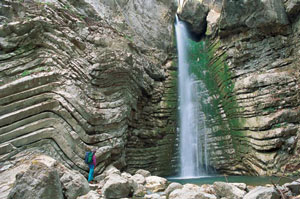
Despite the rather unfortunate conditions of today’s economy, tourism is growing closer and closer to becoming the world’s largest industry. Just from 2008, international tourist arrivals were up 6.5% in 2010 to 935 million, and that was after the country with the highest GDP entered a recession. With rapid development occurring worldwide, there is a growing concern for the negative impacts of mass tourism. Sustainable tourism has become an essential aspect of the travel industry. However, many times travelers are unaware of exactly what sustainable travel entails and how to incorporate it into their itineraries. As travel companies begin to jump on the green travel bandwagon it can be difficult to decipher which ones truly embrace sustainable travel, by not only minimizing the negative environmental aspects of travel but also contributing the local economy and communities, and which ones are simply claiming to be greener as a marketing plow. Through a series of ecotourism blogs, we will highlight some of the industry trends and changes currently occurring to give travelers a better understanding of what it means to travel sustainably.
What is Sustainable Tourism?
There are three basic components of sustainable tourism: economic sustainability, socio-cultural sustainability, and environmental/ecological sustainability. Some of the main focuses are to promote conservation, engage the local economy, and reduce the socio-economic impacts. A sustainable tourism business contributes to the local economy, creates employment opportunities for the local people, and benefits other local industries and businesses the supply the tourism industry. In developing nations of the world where tourism is very common, visitors can sometimes have a negative impact. The impact on local communities is often one of the most overlooked aspects of sustainable tourism. These host communities rely heavily on the revenue that is produced from tourism. Luckily, travelers are beginning to pay more attention to where their travel dollars are going, and as a result are taking more of an interest in the sustainable practices of hotels and travel companies, favoring eco lodges and eco tours. By using tour companies that work with local guides and offer boutique hotel accommodations and guest lodges, as opposed to large international hotel chains, travelers are putting dollars directly into the hands of the people, where it’s most needed.
Why is Sustainable Travel Important?

While tourism is a major contributor to a region’s economic improvements, the more people that an area attracts the more potential for environmental damages to occur. Often times the very things that drew travelers to a destination in the first place, such as natural beauty, unique culture and history, are the very things that get destroyed by mass tourism development. The presence of visitors alone can be a detriment to a historical site, but has also resulted in local governments taking action financially towards environmental conservation. The preservation of natural resources is imperative to the continued growth of positive sustainable travel in a destination.
In places like the Caribbean where over 30% of the GDP comes from tourism, preserving the area for future tourists is extremely important. Island destinations are making a more concerted effort than any other area to move towards supporting sustainable travel due to their very low number of available resources. However, continental regions face issues of their own as well. In the African country of Zimbabwe, 6% of the country’s GDP comes from tourism and simultaneously employs somewhere around 200,000 people. Since hunting is such a popular hobby for tourists on vacation, the CAMPFIRE program allows foreigners to purchase licenses and hunt wildlife with a quota to sustain the natural inhabitants. The money earned from the purchase of the licenses, meat, and skins is redistributed directly back to the local community to build wells, new schools, and health clinics.
Your Carbon Footprint

Another aspect of sustainable travel that is becoming increasingly popular is the availability of carbon offsetting offered to travelers from companies in the industry. Since travel produces so much carbon dioxide emissions between the airlines, hotels, and local transportation, there has been a growing concern for reducing one’s carbon footprint. Global Basecamps partners with Carbonfund.org to offset the company’s entire carbon footprint for the year. Additionally, for each trip sold we have a tree planted in Nepal. Reforestation is one of the best ways to reduce the amount of carbon dioxide in the atmosphere. Carbonfund.org supports 2 other types of carbon offset projects in addition to reforestation: renewable energy and methane and energy efficiency and carbon credits.
The resources for successful sustainable travel are out there and with the increase in popularity, more are sure to pop-up. As travelers become more aware of their social, economic, and environmental impacts while they travel, there is a larger desire to be more conscientious about sustainable travel procedures. The move towards responsible travel is something that everyone should consider, as well as the affects they may have on a destination. Fill out our custom tours form to ensure your next travel adventure is sustainable.












